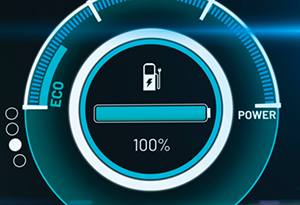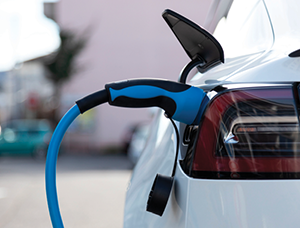 Of all the issues facing convenience retailers today, one of the more burning, and certainly perplexing, is what to do about EV charging. Electric vehicles are getting a tremendous amount of press and are seen in some circles as the only solution to achieve a net-zero carbon future on the transportation front.
Of all the issues facing convenience retailers today, one of the more burning, and certainly perplexing, is what to do about EV charging. Electric vehicles are getting a tremendous amount of press and are seen in some circles as the only solution to achieve a net-zero carbon future on the transportation front.
The California Air Resources Board in August 2022 passed a plan that requires all new passenger cars and light trucks sold in the state to be electric vehicles or plug-in electric hybrids by 2035. The European Union has established similar requirements. Time will tell the practicality, but the headlines are hard to ignore. However, while EV charging will be part of the industry’s future, research indicates the timeline is not nearly as rushed as many retailers anticipate.
According to research done on behalf of the Fuels Institute by S&P Global Mobility, a full transition to electric vehicles will be gradual. The data show that electric vehicles may only account for 6% of vehicles in operation by 2030, and 73% of EVs will be in just 15 states.
One retailer taking on the EV challenge is Giant Eagle, with its GetGo convenience store operations. It has over 250 stores in Indiana, Maryland, Ohio, Pennsylvania and West Virginia.
“GetGo is focused on a more sustainable future, and we have strategies in place all across the value chain to reduce or improve our environmental impact,” said Terri Micklin, the company’s senior vice president of strategy and development. “Support of electric vehicles is a significant aspect of these strategies. Giant Eagle and GetGo are at the beginning of our EV journey. We currently have three EV locations, 22 in varying stages of development. Our program is structured to scale across our entire network of stores.”
She noted the company is taking a multipronged approach to maximize EV customer experience. “EV charging isn’t yet as readily available as you might find in other regions. We plan to impact that in a very positive way.”
Monetization is essential to the long-term growth of the EV marketplace.”
LEGISLATIVE DEVELOPMENTS
A primary driver for EV adoption is a governmental regulatory push for aggressive net-zero carbon reductions. This is centered in Europe and supported by organizations such as the World Economic Forum and the United Nations.
In the United States, support currently tends to be regional, centered on the West Coast and the Northeast but is growing nationally in select demographics. The Biden Administration is aggressive in its pursuit of electrification, which is realized through the recently passed Inflation Reduction Act and implementation of the 2021 Infrastructure Investment and Jobs Act. The president is pushing hard to deliver on promises made after his election.
Electric vehicles come at a premium price compared to internal combustion engine vehicles. The Inflation Reduction Act modifies the $7,500 electric-vehicle tax credit in ways that both promote and hinder adoption.
To be eligible for the credit, a family’s adjusted gross income must be $300,000 or less and $150,000 for a single filer. The MSRP on the vehicle is limited to $80,000 for an SUV and $55,000 for a conventional automobile. The credit applies to electric vehicles, plug-in hybrids and hydrogen fuel-cell vehicles. Also, a $4,000 tax credit is available for pre-owned electric vehicles. However, the buyer’s gross income must be at half the levels for a new vehicle, and the vehicle must cost $25,000 or less, be the first time being sold as used and be at least two years old.
These requirements are compatible with the profile of the traditional EV purchaser, though limiting for some of the higher trim vehicle options. For automobile manufacturers, vehicles must be made in the United States and have domestically sourced battery components—a requirement that will be difficult to meet, at least in the short term. Consumers will also have at least 20 new vehicle options to choose from, which will begin to illuminate the actual consumer marketplace pull for this technology.
 INFRASTRUCTURE GRANTS
INFRASTRUCTURE GRANTS
The $1.2 trillion Infrastructure Investment and Jobs Act passed into law in 2021 set aside $7.5 billion for EV charging infrastructure. The federal government is now distributing the funding through two programs.
The first is the National Electric Vehicle Infrastructure program, and it will provide $5 billion in formula funding to states to build out charging infrastructure along highway corridors—filling gaps in rural, disadvantaged and hard-to-reach locations while instilling public confidence in charging.
The law also provides $2.5 billion in competitive grants to support community and corridor charging, improve local air quality and increase EV charging access in underserved and overburdened communities. The Department of Transportation will open applications for the program later this year.
With federal dollars flowing to the states to deploy EV charging, the convenience-store industry wants to make sure that Washington is not picking winners and losers in the process (or allowing that to develop by accident) or allowing certain competitive sectors to have unfair market advantages.
“You can have all the money in the world for a particular project, but how you distribute and prioritize those dollars are always the critical elements,” said Paige Anderson, NACS director, government relations. “NACS fought hard during the legislative process to make sure that our industry would have access to those dollars, and they should be used in a way that promotes competition and private investment.”
Part of that is making sure that smaller players have the same access to funding as the larger players. Another concern is making sure that the electric utilities are placed on an equal footing as other players looking to expand EV charging, specifically, that they don’t take advantage of their rate base (existing electric customers) to subsidize building out an EV charging network.
Once you get 10 to 12 transactions a day, you can overcome the demand charges.”
ECONOMICS
For the retailer, making money on electric charging is, obviously, a primary concern, and it comes down to several factors. As with conventional fueling, a major goal is to get people out of their cars and into the store, and charging potentially increases that opportunity, as a five-minute conventional fueling stop potentially becomes a 20-minute or more charging session. Anecdotally, there are success stories on this front where time in store and spend have increased for these customers. There is also the hope to make money on the charging itself.
“Monetization is essential to the long-term growth of the EV marketplace,” said Micklin. “With our third-party solutions, we are engaging our guests through services inside our stores with grocery, pharmacy, convenience and made-to-order food. Using our in-house solution, by working with current grant programs, we can unlock value over the life of the chargers in addition to our store impact.”
Today’s biggest challenge to EV charging profitability comes down to commercial demand charges. Basically, this is a utility charge for the peak demand during a month. The utility company’s goal with this charge is to provide the infrastructure required to support that level of electrical current. Fast chargers can create a significant peak in demand, especially if several vehicles are charging at once, yet the overall volume for that month may not be sufficient to cover the demand charge.
 “We’ve received from an expert source that once you get to 10 to 12 transactions a day, you can overcome the demand charges,” said John Eichberger, executive director, Fuels Institute. “If you go to a congested market like California, where you don’t have enough chargers, you have a lot of demand. If you can spread your demand charge out across a hundred customers, you can figure out a way to make money. But we have a long way to go before this becomes a profitable business enterprise [more broadly].”
“We’ve received from an expert source that once you get to 10 to 12 transactions a day, you can overcome the demand charges,” said John Eichberger, executive director, Fuels Institute. “If you go to a congested market like California, where you don’t have enough chargers, you have a lot of demand. If you can spread your demand charge out across a hundred customers, you can figure out a way to make money. But we have a long way to go before this becomes a profitable business enterprise [more broadly].”
Some of the states are starting to recognize that demand charges are an obstacle to EV growth. “The current rate structure doesn’t take the use of electricity as a transportation fuel into account,” Anderson said. “You see some discussions around the potential need to develop a new type of rate or a new tariff. You’re also seeing other states saying it’s too complicated to come up with a brand-new rate in tariff while it still is in its infancy. [So they say,] let’s just do a temporary demand charge holiday.”
Anderson noted that it’s not just a matter of each state doing it differently, but each utility territory doing it differently. There are also complications translating traditional utility rate structures for “selling electricity” to the retail sale of electricity in some areas.
Demand charges are also a concern for GetGo. “Demand charges through the utility companies are very much on our radar, and we are identifying ways to minimize that impact as much as possible by creating other energy sources and looking at our energy usage across our entire facility,” Micklin said. “We are focused on migrating to a more sustainable future across our entire platform, and those goals are embedded into everything we do.”
EVs are tracking as the highest selling powertrain segment right now.”
DEPLOYMENT PERSPECTIVE
A lot of factors impact the rate of adoption.
As noted, government regulations are one component. To cite a few major market driven factors: Gasoline is expensive right now, but there is also inflation and a likely recession; consumer travel behaviors must change (some will not mind, others will); and higher vehicle cost, vehicle options and vehicle availability. Then there is simply the time required to turn over the vehicle fleet.
“If you listen to McKinsey & Company and Boston Consulting Group, retailers should be panicked,” said Eichberger. “But when you think about where we really are—supply chain, production and efficiencies, the recent increase in EV prices—there are indications of larger challenges, and it’s affecting the entire automaking industry. But EVs are in a different situation. They’re not cost effective. They’re massive recalls still. There’s a lot of lack of consumer confidence in these. And I think that’s going to be a big anchor on the growth. It’s likely to be a lot more conservative transition.”
Mark Boyadjis, global technology lead, consulting services, S&P Global Mobility (who presented the 2022 NACS Show education session “Reality of EV Transitions ”), offers a more positive adoption counterpoint but still acknowledges an extended time frame beyond the most optimistic assessments.
“Every day there are more EVs put into the fleet. So, that number is growing dramatically right now,” Boyadjis said. “EVs are tracking as the highest selling powertrain segment right now. It’s beginning to flip—I think we’re already there—from a technology push situation to technology pull situation where the customers are demanding this.”
He noted that fuel retailers should have a plan in place on how they’re going to capture EV market share. “By 2030, those plans should have been executed,” Boyadjis said. “Does that mean that they need to invest hundreds of thousands or millions of dollars in equipment? Not necessarily. But it does have to be a concerted and focused effort to understand where the demand is going to be.”
Missed the NACS Show education sessions on EV? Not to worry.
EV Economics: Fact vs. Fiction and Reality of EV Transitions are available as part of the 2022 suite of education sessions ready for purchase in a streaming format. Learn more at www.convenience.org/Solutions/Store/Products.